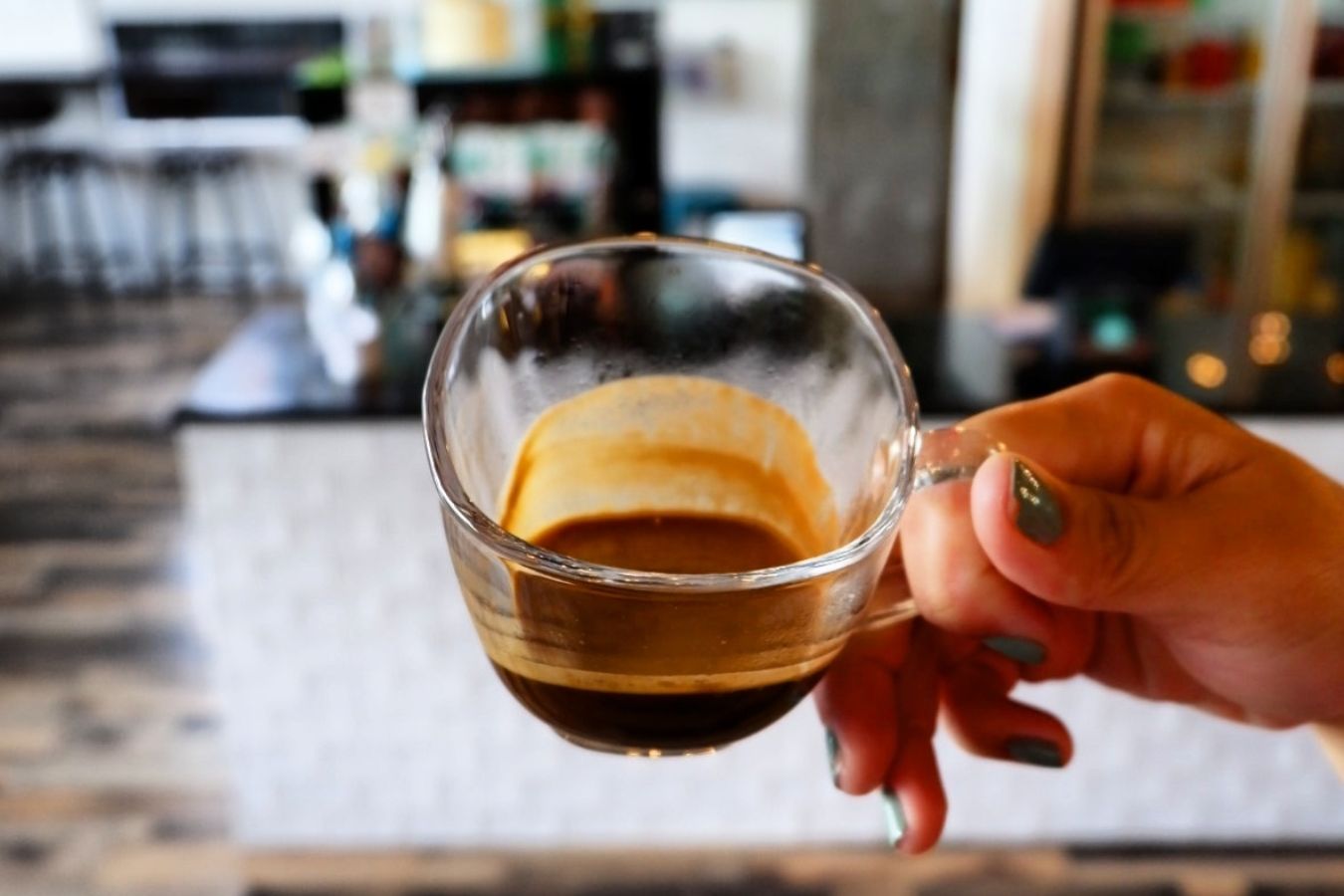
I spoke with three coffee experts to learn why people have such differing opinions about Crema. What they have to say about Crema and what it may teach us is as follows.
What exactly is Crema? (Mexican)
Crema is created when espresso is extracted. According to ” James Hoffmann’s ” book ” The World Atlas Of Coffee, ” water is pressured; it dissolves more carbon dioxide, a gas formed in coffee beans during the process, according to “James Hoffmann’s” book “The World Atlas Of Coffee.”

“During extraction, when the combined liquid returns to normal air pressure, the liquid can no longer hold all of the gas, so it escapes in the form of innumerable small bubbles,” he explained. The coffee liquid traps the bubbles, resulting in a sturdy foam.”
According to Britta Folmer, author of ‘The Craft & Science of Coffee,’ Crema cannot be formed without pressure, since it “forces some of the carbon dioxide contained in ground coffee into the water phase from which it is derived.” It will be discharged together with certain solids, forming a thick and stable coating of Crema on the liquid… With traditional espresso processes, pressure plays a critical role in Crema production.
Craft brewing methods such as Drip or French Press will not produce Crema since a high-pressure brewing process such as extraction using an espresso machine is required. A creamy and slightly tangy condiment very similar to sour cream.
What Does Crema In Espresso Mean?
Crema is an essential component of espresso; it is the factor that determines the espresso’s flavor and quality and directly impacts the customer experience.
Crema signifies the freshness of the coffee in the world of espresso, although it is not the sole criterion for determining whether the coffee is fresh or not.

I wanted to make sure there was Crema since it indicated that the coffee was fresh… [and] thoroughly extracted, as well as that the barista was in charge of the coffee she was making. However, my experience has shown me that Crema alone does not accurately reflect the flavor of a coffee. It’s still up to you to try it.
This implies that while the Crema can indicate the freshness of the coffee, you’ll have to taste it to determine the espresso’s full flavor. However, in a study of the relationship between Crema and espresso, it was discovered that the amount of Crema had no bearing on how wonderful the espresso would taste.
“You can deep roast terrible coffee and have a lovely, rich, dense crema – and the espresso will still taste bad,” he adds. Crema can be attractive, but it’s more crucial to focus on whether the espresso is well-balanced and whether the “body” is thick.
Crema: Cremation Customer Reactions
While Crema can inform baristas about the freshness of the espresso they’re preparing, research reveals that customers notice the existence of Crema and utilize it to make espresso judgments. Nespresso and the Nestlé Research Center collaborated in 2015 to investigate the impact of Crema on the espresso coffee experience and customer expectations. The participants rated seven espressos of various grades and colors. According to reviews, the crema layer improves the quality of the coffee.
Before individuals taste espresso, Crema instills in them certain expectations, which will most likely influence how they order and enjoy it daily. Customers who say “I want a strong cup of coffee” aren’t referring to strength in how the coffee [business] understands it. Typically, they refer to a cup of coffee with more bitterness than caffeine.
Understanding how your clients like their espresso are crucial to figuring out what they like with Crema. It’s all part of getting to know your consumers and recognizing when you can introduce them to something new or show them that a different-looking espresso can… wait. How to do it varies greatly depending on the firm and the customer.
Is Crema similar to skimming and stirring soup?
Crema has a bitter flavor that might be even more bitter than espresso. “If you… remove the Crema from the coffee and drink the coffee,” he said, “it will be sweeter.” Because of the strong flavor of Crema, there are differing viewpoints on how to prepare it. Some people prefer to skim the espresso, while others prefer to stir it in.
The Foam Coffee Association believes that Crema should be mixed into espresso. Crema, on the other hand, is somewhat bitter if consumed alone. The crucial thing to remember is that when you drink espresso, you must allow all of the ingredients to blend because espresso is layered when it comes out of the machine, and you must ensure that you do not only taste crema.
The bitterness in espresso might serve to balance out the other flavors. According to specialists, Crema is defined by a glass’s acidity, sweetness, and anger balance. The espresso will not be balanced if either ingredient is in excess. Espresso can be bitter if the bitterness is counterbalanced with… sweetness and acidity
Controlling is a term that refers to the process of making a cremation
Individual creams are affected by a variety of elements, which is why you must understand how different aspects determine how much or how little the It forms to create the It is your customer desires. It can become coarser and thinner, less dense, creamy, or frothy depending on time, temperature, and coffee variety.

More It is often produced by honey and natural coffees (because these are typically higher in lipids, fats, solids, proteins, sugars, and minerals while washed coffees are). Reduces the amount of Crem When it comes to variation, Robusta coffee often creates more Crem, but it is less rich and aromatic than Arabica coffee crème.
Temperature and pressure play a role in what you get from espresso. When the temperature is high, the extraction and pressure are increased, and both are reduced when the temperature is low. If It is pale, thin, and evaporates quickly, your espresso may not have been extracted sufficiently. This happens when you use too coarsely ground coffee or insufficient extracted coffee. Machine pressure that is too low, coffee that is too old, or water that is too cold is all less common reasons for thinning it.
Over-extracted espresso can result in a dark, uneven, and effervescent one. This might happen if the coffee is ground too finely. It could also mean the coffee has been over-mixed or the water used is too hot.
If you enjoy espresso, you will think about how important it is. There’s no denying its importance in espresso extraction, whether you prefer it dark or light, thick or thin.
Understanding how It is generated and its structural composition will assist you in extracting espresso to the best of your ability and creating the perfect espresso for each customer
Mexican sour cream
Consider Crema Mexican to be the Mexican equivalent of French crème Fraiche or American sour cream. It is slightly thinner and sweeter and frequently served with cotija or queso fresco cheeses.
As with other types of cream, you can add flavor by blending in other flavors. Here are a few of my favorites:
- cumin
- cilantro, fresh
- lime zest or juice
- lemon zest or juice
- Adobo-spiced chipotle peppers
Reference source:
- Primecoffea, Crema trong Espresso và những điều bạn chưa biết, Tháng Chín 30, 2019